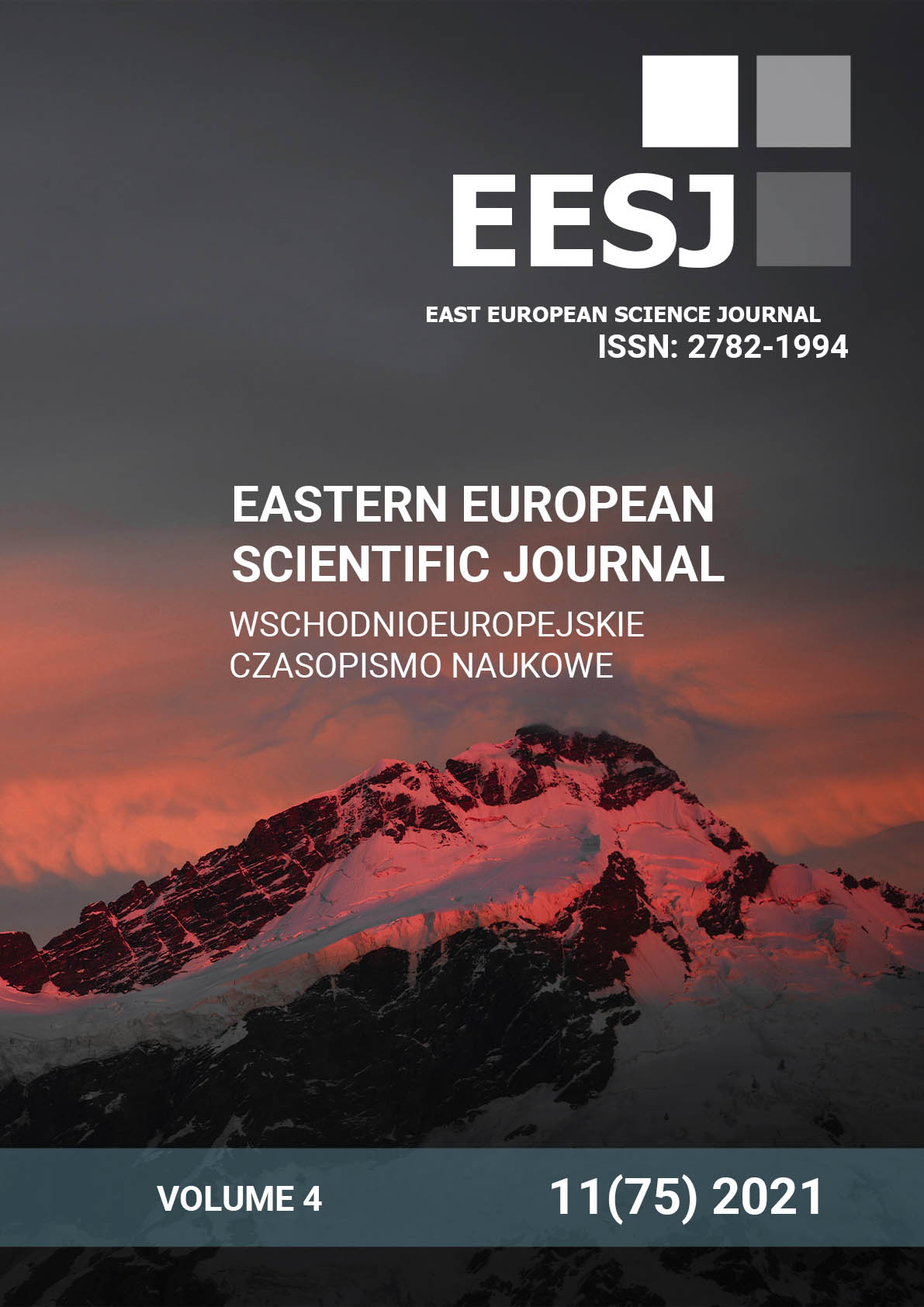COMPARATIVE CHARACTERISTICS OF EFFECTIVENESS AND SAFETY OF ADJUVANT SEDATION OF PATIENTS WITH ALCOHOLIC DELIRIUM
DOI:
https://doi.org/10.31618/ESSA.2782-1994.2021.4.75.171Keywords:
alcoholic delirium, sedation, ketamine, sodium oxybutyrate, dexmedetomidineAbstract
Chronic alcoholism is one of the factors of early mortality in the world. The most formidable complication of this addiction is the state of alcohol withdrawal with delirium. It is based on a long-term imbalance of the GABA and glutamatergic systems in the brain. Today, the search for an optimal sedation regimen that would be effective on the one hand, and, on the other hand, would have a sufficient safety profile, remains relevant.
Three sedation regimens with the addition of ketamine, sodium oxybutyrate and dexmedetomidine were investigated. All were compared with the traditional sedation (control) regimen and with each other. The control points of the study were the following parameters: the duration of the episode of delirium, hemodynamics, plasma cortisol and serotonin, laboratory parameters of the state of the kidneys and liver.
As a result of the study, we found that all of the proposed schemes had a shorter duration of delirium compared to the control. The shortest episodes of delirium were observed in the dexmedetomidine group. None of the proposed groups could adequately normalize hemodynamic parameters. We believe that the reason for this is both the peculiarities of the mechanism of action of the drugs we have chosen, and electrolyte imbalance, in particular, hypomagnesemia. The safety of our proposed sedation regimens requires further comprehensive research
References
Beg M, Fisher S, Siu D, Rajan S, Troxell L, Liu VX. Treatment of Alcohol Withdrawal Syndrome with and without Dexmedetomidine. Perm J.2016;20(2):49-53. doi:10.7812/TPP/15-113
Boettger S, Meyer R, Richter A, et al. Delirium in the intensive care setting dependent on the Richmond Agitation and Sedation Scale (RASS): Inattention and visuo-spatial impairment as potential screening domains. Palliat Support Care. 2020;18(2):148-157. doi:10.1017/S1478951519000683
Busardò FP, Kyriakou C, Napoletano S, Marinelli E, Zaami S. Clinical applications of sodium oxybate (GHB): from narcolepsy to alcohol withdrawal syndrome. Eur Rev Med Pharmacol Sci. 2015;19(23):4654-4663.
Eloma AS, Tucciarone JM, Hayes EM, Bronson BD. Evaluation of the appropriate use of a CIWA-Ar alcohol withdrawal protocol in the general hospital setting. Am J Drug Alcohol Abuse. 2018;44(4):418-425. doi:10.1080/00952990.2017.1362418
Grant BF, Goldstein RB, Saha TD, et al. Epidemiology of DSM-5 Alcohol Use Disorder: Results From the National Epidemiologic Survey on Alcohol and Related Conditions III. JAMA Psychiatry. 2015;72(8):757-766. doi:10.1001/jamapsychiatry.2015.0584
Hansen AW, Almeida FB, Bandiera S, et al. Correlations between subunits of GABAA and NMDA receptors after chronic alcohol treatment or withdrawal, and the effect of taurine in the hippocampus of rats. Alcohol. 2020;82:63-70. doi:10.1016/j.alcohol.2019.08.005
Harrison NL, Skelly MJ, Grosserode EK, et al. Effects of acute alcohol on excitability in the CNS. Neuropharmacology. 2017;122:36-45. doi:10.1016/j.neuropharm.2017.04.007
Kotfis K, Marra A, Ely EW. ICU delirium - a diagnostic and therapeutic challenge in the intensive care unit. Anaesthesiol Intensive Ther. 2018;50(2):160-167. doi:10.5603/AIT.a2018.0011
Langlois H, Cormier M, Villeneuve E, Hoffman RS, Longo C, Gosselin S. Benzodiazepine resistant alcohol withdrawal: What is the clinician's preferred definition?. CJEM. 2020;22(2):165-169. doi:10.1017/cem.2019.421
Mira RG, Tapia-Rojas C, Pérez MJ, et al. Alcohol impairs hippocampal function: From NMDA receptor synaptic transmission to mitochondrial function. Drug Alcohol Depend. 2019;205:107628. doi:10.1016/j.drugalcdep.2019.107628
Morisot N, Ron D. Alcohol-dependent molecular adaptations of the NMDA receptor system. Genes Brain Behav. 2017;16(1):139-148. doi:10.1111/gbb.12363
Sabogal-Guáqueta AM, Hobbie F, Keerthi A, et al. Linalool attenuates oxidative stress and mitochondrial dysfunction mediated by glutamate and
NMDA toxicity. Biomed Pharmacother. 2019;118:109295. doi:10.1016/j.biopha.2019.109295
Shah P, McDowell M, Ebisu R, Hanif T, Toerne T. Adjunctive Use of Ketamine for Benzodiazepine-Resistant Severe Alcohol Withdrawal: a Retrospective Evaluation. J Med Toxicol. 2018;14(3):229-236. doi:10.1007/s13181-018-0662-8
Stockwell T, Zhao J, Panwar S, Roemer A, Naimi T, Chikritzhs T. Do "Moderate" Drinkers Have Reduced Mortality Risk? A Systematic Review and Meta-Analysis of Alcohol Consumption and All-Cause Mortality. J Stud Alcohol Drugs. 2016;77(2):185-198. doi:10.15288/jsad.2016.77.185
Downloads
Published
Issue
Section
License

This work is licensed under a Creative Commons Attribution-NoDerivatives 4.0 International License.
CC BY-ND
A work licensed in this way allows the following:
1. The freedom to use and perform the work: The licensee must be allowed to make any use, private or public, of the work.
2. The freedom to study the work and apply the information: The licensee must be allowed to examine the work and to use the knowledge gained from the work in any way. The license may not, for example, restrict "reverse engineering."
2. The freedom to redistribute copies: Copies may be sold, swapped or given away for free, in the same form as the original.




